Complete Solutions to CHEMISTRY of chapter NTA JEE MOCK TEST 60 of Class 12 book with complete answers and questions
| Class 12 | CHEMISTRY |
| Chapter | NTA JEE MOCK TEST 60 |
| NTA MOCK TEST | CHEMISTRY |
| Number Of Questions | 25 |
| Academic Year | 2023-24 |
`[X]+H_(2)SO_(4) rarr [Y]` a colourless gas with irritating smell `[Y] + K_(2)Cr_(2)O_(7) + H_(2)SO_(4) rarr` green solution `[X]` and `[Y]` are
02:52View SolutionThe third line of the Balmer series, in the emission spectrum of the hydrogen atom, is due to the transition from the
01:44View SolutionWhat will be the pH of a solution formed by mixing 10 ml 0.1 M `NaH_(2)PO_(4)` and 15 mL 0.1 M `Na_(2)HPO_(4)`?
`["Given: for "H_(3)PO_(4)Pk_(a_(1))=2.12, Pk_(a_(2))=7.2]`06:39View SolutionThe oxidation states of
Cr in `[Cr(H_(2)O)_(6)]Cl_(3). ,[Cr(C_(6)H_(6))_(2)]` and
`K_(2)[Cr(CN)_(2)(O_(2))(NH_(3))]` respectively are04:10View Solution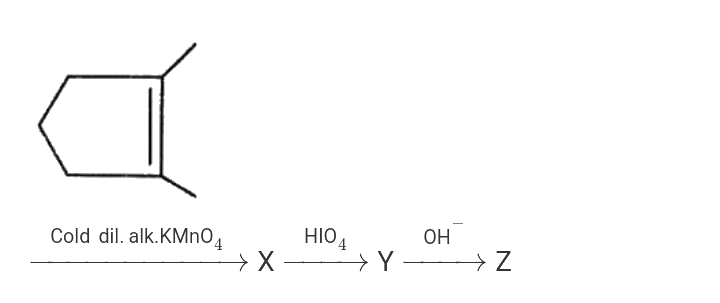
`overset("Cold dil.alk ,KMnO"_(4))rarrXoverset(HlO_(4))rarr overset(OH^(-))rarr Z`
In the above sequence of reaction, Z is03:41View SolutionCalculate the work done when 112 g iron reacts with dilute HCl at 300 K. The reaction is carried out in an open container
(At mass of Fe = 56)02:33View SolutionInitially, 0.8 mole of `PCl_(5)` and 0.2 mol of `PCl_(3` are mixed in one litre vessel. At equilibrium, 0.4 mol of `PCl_(3)` is present. The value of `K_(c )` for the reaction
`PCl_(5)(g) hArr PCl_(3)(g)+Cl_(2)(g)`
would be02:45View SolutionWhich of the following arrangements does not represent the correct order of the property stated against it?
06:37View SolutionA solution of `(-)-1-` chloro -1- phenylethane in toluene racemises slowly in the presence of a small amount of `SbCl_(5)`, due to the formation of
05:56View SolutionFor gaseous state, if most probable speed is denoted by `C^(**)` average speed by `barC` and root square speed by `C`, then for a large number of molecules, the ratios of these speeds are
02:41View SolutionAn orgainc compound A upon reacting with `NH_(3)` gives `B` On heating `B` give `C.C` in presence `KOH` reacts with `Br_(2)` to yield `CH_(3)CH_(2)NH_(2) A` is .
03:31View SolutionAn unknown alcohol is treated with the ''Lucas reagent'' to determine whether the alcohol is primary, secondary or tertiary. Which alcohol reacts fastest and by what mechanism?
02:50View SolutionA gaseous compound of nitrogen and oxygen is paramagnetic in nature. When it is cooled below `0^(@)C` its molecular mass increases and paramagnetism is lost. The behaviour is reversed on heating. The compound is
03:24View SolutionIn which of the following molecules/ions is the bond angle largest?
05:41View SolutionElectronic configuration of few elements are given below. Mark the incorrect match.
03:37View SolutionIn a Cu - voltmeter, mass deposited in 30 s is m gm. If the time - current graph is shown in the following figure
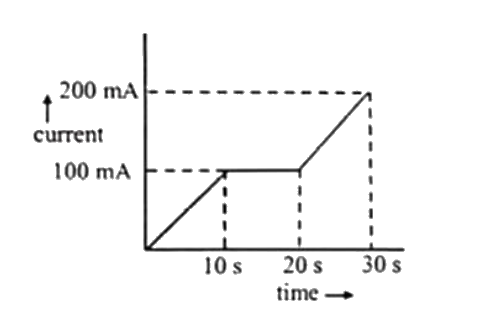
What is the electrochemical equivalent of Cu?07:27View SolutionChlorine gas is prepared by reaction of `H_(2)SO_(4)` with `MnO_(2)` and `NaCl`. What volume of `Cl_(2)`will be produced at STP if 50 g of `NaCl` is taken in the reaction?
02:58View SolutionOzone depletion in the stratosphere is primarily due to
01:49View SolutionThe number of unit cells present in 1 g cube shaped ideal crystal of solid `A^(+)B^(-)` (with CCP close packing) (formula mass = 60) are
05:56View SolutionThe transformation given below can be performed by
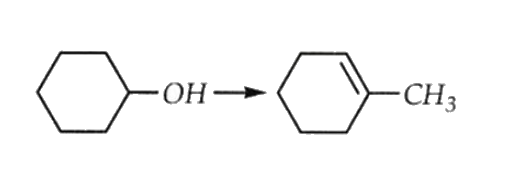 08:55View Solution
08:55View SolutionThe crystal field splitting energy (CFSE) for `[CoCl_(6)]^(4-)` is about `"18000 cm"^(-1)`. What would be the CFSE value for `[CoCl_(4)]^(2-)`?
02:21View SolutionWhat is the pOH of 0.1 M KB (salt of weak acid and strong base) at `25^(@)C` ? (Given : `Pk_(b) of B^(-)`=7)
03:10View SolutionThe reaction `A+B+Crarr` products is found to obey the rate law, `r=(d[A])/(dt)=K[A]^(2)[B]^((3)/(2))[C]^(-(1)/(2))`. The overall order of the reaction is
01:51View SolutionThe number of stereoisomers possible for the molecule,
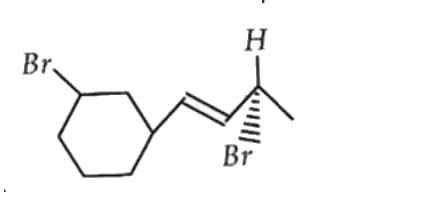 01:53View Solution
01:53View Solution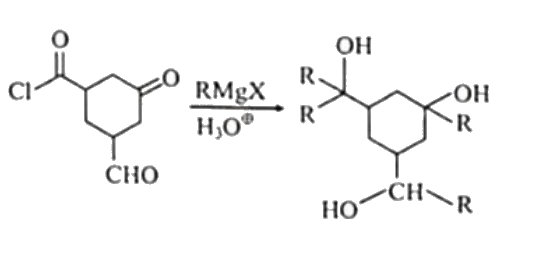
How many molecules of RMgX are consumed in the above given reaction?03:56View Solution
CHEMISTRY questions and complete solutions for chapter NTA JEE MOCK TEST 60 of NTA MOCK TESTS of Class 12
